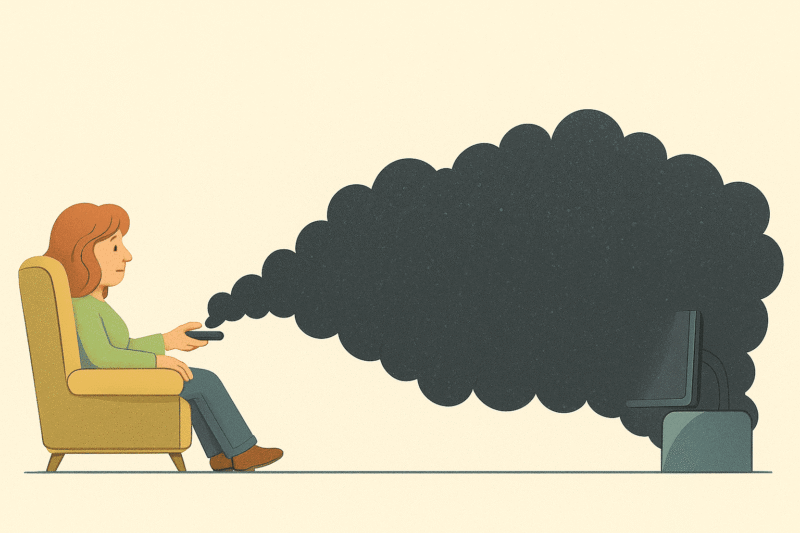The Hidden Truth About “The Cloud”

This Deep Dive was originally sent on August 17th, 2025.
You know that nagging question you’ve been pushing to the back of your mind every time you binge another series or upload hundreds of vacation photos to the cloud? The one that asks whether all this “free” digital stuff is actually free — and what it’s really costing the planet?
Ugh, I know it too. And yeah, it’s uncomfortable. I sure as hell don’t like to think about the carbon footprint of my latest Netflix binge.
But it’s an important conversation and we need to have it. ‘Cause here’s the thing:
Every time you stream a show on Netflix, ask ChatGPT a question, or back up your photos to iCloud, you’re not just tapping into some magical “cloud” floating somewhere in the digital ether.
You’re actually powering up massive, energy-guzzling warehouses that consume more electricity than entire countries and pump out carbon emissions like industrial factories from the 1950s.
The tech industry talks a big game about green cloud computing and sustainable practices, but the numbers tell a different story. I know that sounds dramatic, but here’s the reality: that innocent Netflix binge actually has a carbon footprint equivalent to driving your car for 27 miles. And that’s just one show for one person.
Now multiply that by billions of users streaming, searching, and storing data 24/7, and you start to understand why data centers now consume 1.5% of global electricity — about 415 terawatt-hours annually.
And yeah, it gets even wilder. By 2030, that number is projected to more than double to levels that rival the electricity consumption of entire nations. And the biggest culprit? The AI revolution that tech companies promised would solve climate change.
Instead, we’re watching Google, Microsoft, and Amazon quietly abandon the very climate commitments they spent years bragging about. Google’s emissions are up 48% since 2019. Microsoft’s up 30%. Amazon’s up 40%.
These aren’t rounding errors — these are companies choosing AI profits over the planet, and they’re hoping you won’t notice the massive bait-and-switch happening right under our noses.
Let’s dive into the real story behind “the cloud,” why your digital habits have a bigger carbon footprint than you think, and how the AI boom is completely derailing global climate goals.
The Myth of the Cloud
First, let me burst a bubble for you: the “cloud” is not some ethereal digital space that has no connection to the real world.
When Apple tells you your photos are “in the cloud,” what they really mean is they’re sitting on physical hard drives in massive, windowless warehouses that run 24/7, consume enormous amounts of electricity, and require industrial cooling systems to prevent them from overheating.
These warehouses — called data centers — are the physical backbone of everything digital. Every Google search, every TikTok video, every Zoom call, every AI interaction gets processed in these facilities that look more like aircraft hangars than fluffy white clouds that the term evokes.
And they’re absolutely massive. A single data center can be the size of several football fields and house tens of thousands of servers. The largest ones consume enough electricity to power hundreds of thousands of homes.
Currently, these facilities account for roughly 1.5% of global electricity consumption, but that figure is climbing fast. According to the International Energy Agency, electricity demand from data centers worldwide is set to more than double by 2030 to around 945 terawatt-hours. [1] This is slightly more than the entire electricity consumption of Japan — the 5th largest consumer of electricity in the world today.

🔒This is where the free preview ends.
Join thousands of professionals who get the complete story
Our Deep Dive subscribers rely on these investigations to stay ahead of emerging threats and make informed decisions about technology, security, and privacy.
✅ Complete access to this investigation
✅ All future Deep Dive reports
✅ Searchable archive of past investigations
✅ No ads, no sponsored content
✅ Cancel anytime